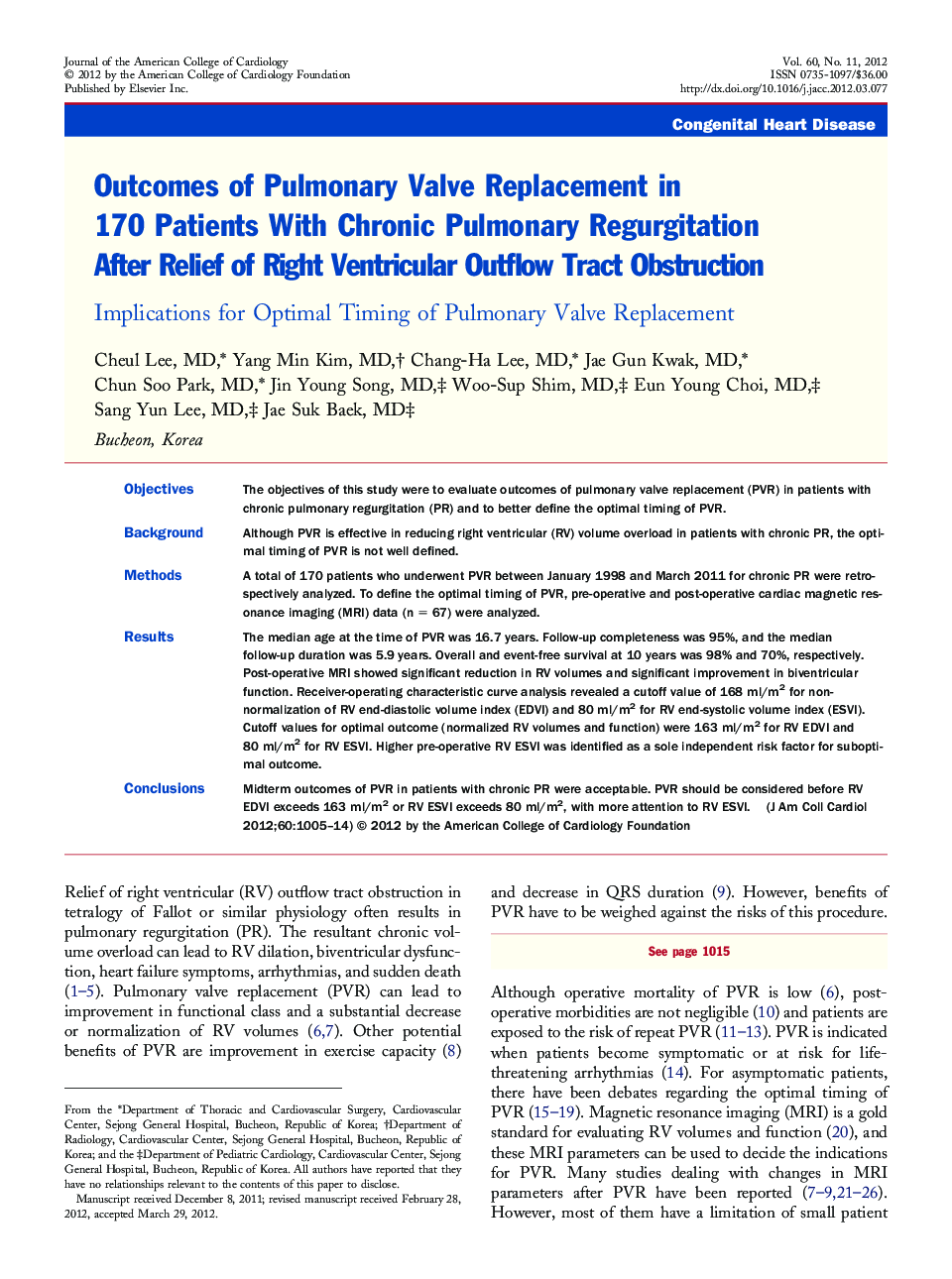| Article ID | Journal | Published Year | Pages | File Type |
|---|---|---|---|---|
| 2946864 | Journal of the American College of Cardiology | 2012 | 10 Pages |
ObjectivesThe objectives of this study were to evaluate outcomes of pulmonary valve replacement (PVR) in patients with chronic pulmonary regurgitation (PR) and to better define the optimal timing of PVR.BackgroundAlthough PVR is effective in reducing right ventricular (RV) volume overload in patients with chronic PR, the optimal timing of PVR is not well defined.MethodsA total of 170 patients who underwent PVR between January 1998 and March 2011 for chronic PR were retrospectively analyzed. To define the optimal timing of PVR, pre-operative and post-operative cardiac magnetic resonance imaging (MRI) data (n = 67) were analyzed.ResultsThe median age at the time of PVR was 16.7 years. Follow-up completeness was 95%, and the median follow-up duration was 5.9 years. Overall and event-free survival at 10 years was 98% and 70%, respectively. Post-operative MRI showed significant reduction in RV volumes and significant improvement in biventricular function. Receiver-operating characteristic curve analysis revealed a cutoff value of 168 ml/m2 for non-normalization of RV end-diastolic volume index (EDVI) and 80 ml/m2 for RV end-systolic volume index (ESVI). Cutoff values for optimal outcome (normalized RV volumes and function) were 163 ml/m2 for RV EDVI and 80 ml/m2 for RV ESVI. Higher pre-operative RV ESVI was identified as a sole independent risk factor for suboptimal outcome.ConclusionsMidterm outcomes of PVR in patients with chronic PR were acceptable. PVR should be considered before RV EDVI exceeds 163 ml/m2 or RV ESVI exceeds 80 ml/m2, with more attention to RV ESVI.
